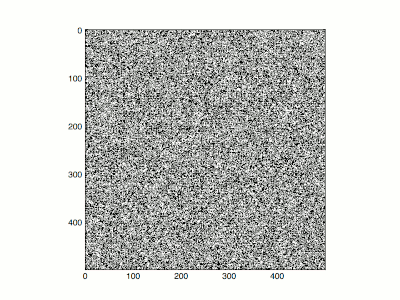Probability at Durham
Possible topics for postgraduate research
Spin Systems
Spin systems are probabilistic models of matter. They arise as part of the subject of statistical mechanics, which has been a profound source of inspiration for probability theory. The simplest example, the Ising model, describes a ferromagnetic material in which the magnetic moments of atoms can point either up or down. Despite being a gross simplification of the real physics of ferromagnetism, the Ising model captures the existence of a ferromagnetic phase transition. That is, at low temperatures, ferromagnetic materials behave like magnets (have a net magnetic moment), while at high temperatures they do not.
Different physical and probabilistic phenomena can be described by replacing the up/down target space of the Ising model with other spaces. In particular, interesting statistics of random geometric objects like self-avoiding walks, reinforced random walks, random spatial permutations, and random spanning forests can be expressed in terms of spin systems. Investigating these relationships is interesting in its own right, and can also be useful as a tool for studying the properties of random geometric objects. It is particularly interesting to determine when phase transitions do and do not occur, and to understand the properties of the phases that exist.
Contact: Tyler Helmuth.
